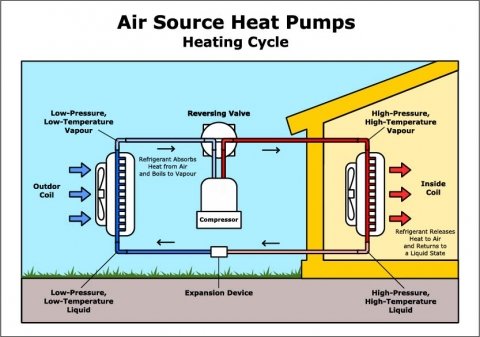Air source heat pumps can indeed heat water, but they are not typically designed to provide hot water simultaneously with space heating. This is because most domestic heat pumps are not capable of producing hot water quickly enough to meet the demand for baths, taps, and showers. However, there are several strategies and technologies that can be employed to effectively use an air source heat pump for water heating.
Understanding the Limitations of Air Source Heat Pumps for Water Heating
Air source heat pumps work by extracting heat from the surrounding air and transferring it to a working fluid, which is then used to heat the air or water in a building. While they can be used to heat water, the process is not as straightforward as with a traditional boiler or water heater.
The main challenge is that air source heat pumps are not designed to produce hot water at the same rate as a conventional water heater. This means that the heat pump may not be able to keep up with the demand for hot water, particularly during periods of high usage, such as when multiple showers or baths are being taken simultaneously.
To overcome this limitation, it is common to use a hot water storage cylinder or tank in conjunction with the air source heat pump. This allows the heat pump to gradually heat the water over time, which can then be stored and used as needed.
Strategies for Effective Water Heating with Air Source Heat Pumps
-
Hot Water Storage Cylinder: The most common solution is to use a hot water storage cylinder or tank in conjunction with the air source heat pump. The heat pump can then gradually heat the water in the cylinder, which can be used as needed. It is important to ensure that the cylinder is properly insulated to minimize heat loss and maintain the desired water temperature.
-
Legionella Prevention: When storing water between 20°C and 45°C, there is a risk of legionella bacteria growth. To mitigate this risk, it is recommended to heat the water in the cylinder to at least 60°C for at least 30 minutes or 55°C for at least 5-6 hours on a regular basis. This can be achieved using an electric immersion heater installed in the top of the hot water cylinder.
-
Larger Heat Exchanger Coils: For maximum efficiency, the existing hot water cylinder may need to be replaced with one that has a larger surface area of heat exchanger coils. This will improve the transfer of heat from the heat pump to the water in the cylinder, allowing for faster and more efficient heating.
-
Hybrid Systems: If there is not enough space for a large hot water cylinder, a hybrid system can be considered. In a hybrid system, the heat pump is used for space heating, while a separate boiler (which could be the existing boiler) is used to provide hot water.
-
Heat Batteries: Another option for limited space is a heat battery, which can store excess heat (or electricity) in a phase-change material, allowing it to be released as needed for hot water or space heating.
Advantages and Disadvantages of Air Source Heat Pumps for Water Heating
Advantages:
– Air source heat pumps can be used in more extreme climates than ground-source or water-source heat pumps.
– Customer satisfaction with air source heat pump systems is generally very high.
– Ground-source or water-source heat pumps can reduce energy use by 70%-80%, control humidity, and are sturdy and reliable.
Disadvantages:
– Air source heat pumps are not typically designed to provide hot water at the same time as space heating, with the demand for hot water taking priority.
– Domestic heat pumps may not be able to produce hot water quickly enough to meet the demand for baths, taps, and showers.
– Careful consideration is needed to prevent the risk of legionella bacteria growth when storing water between 20°C and 45°C.
Innovations in Heat Pump Technology
The performance of heat pumps is constantly being improved through various innovations, including:
-
Two-speed Compressors: These compressors can operate at different speeds, allowing the heat pump to adjust its output to match the heating or cooling demand more efficiently.
-
Variable-speed or Dual-speed Motors: These motors can adjust their speed to match the load, improving efficiency and reducing energy consumption.
-
Desuperheater: A desuperheater is a heat exchanger that captures the excess heat from the heat pump’s refrigerant and uses it to heat water, further improving the system’s overall efficiency.
-
Scroll Compressor: Scroll compressors are more efficient and quieter than traditional compressors, making them a popular choice for heat pump systems.
-
Dual-fuel or Hybrid Systems: These systems combine a heat pump with a secondary heating source, such as a boiler or furnace, to provide a more balanced and efficient heating solution.
By understanding the capabilities and limitations of air source heat pumps for water heating, as well as the various strategies and innovations available, homeowners and installers can make informed decisions to ensure the most effective and efficient use of these systems.

